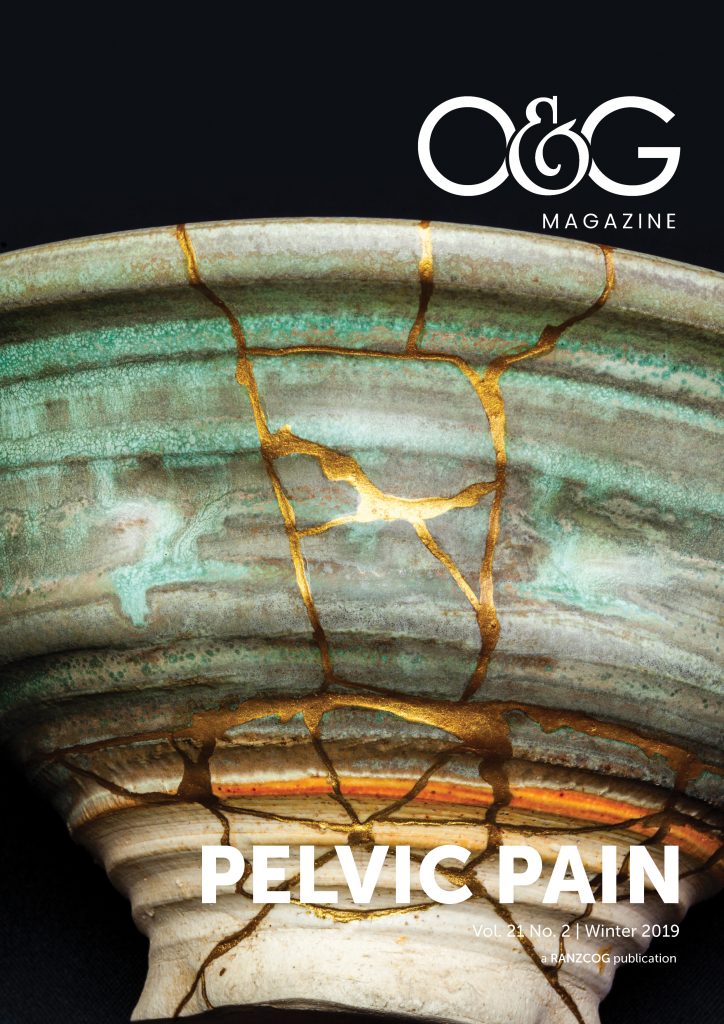In 2019 the world of pain is full of innovative researchers, shifting paradigms of understanding and great hope. We have gathered together authors from around Australia and New Zealand to make you think, make you want to know more and look up all the references!
Momentum is building for pain management and endometriosis research in the political arena, multidisciplinary pain clinics are being created and a new language is filtering out.
We have articles from gynaecologists, anaesthetists, psychologists, physiotherapists, scientists, educators and lobbyists. We have controversies, and nothing makes authors happier than people who write letters to discuss and engage in the conversation.
Explain pain
Who would have thought that explaining pain to patients can treat it? Language matters – I challenge you all to convey the new neuroscience knowledge and be pain educators in your interactions with patients. Women need to be listened to and understood; as does any patient seeking care. Talking with them is treatment. Explain that pain is multifactorial and we have no way of knowing what proportion of their pain is due to endometriosis – a muscle response, contributions from visceral hypersensitivity, other pain states (pain begets pain) or sleep and mood disorders – so everything matters; you can’t have pain if you don’t have a brain. No fancy business required; the best tool is an A4 piece of paper to draw the brain, spinal cord, organs and body and use arrows to describe options to treat each part of the complex human.
Controversies
Do we know if it matters that someone has endometriosis if their pain is resolved with medical treatment? Does it matter that it took seven years to diagnose the histology? Injustice is the new catastrophising – and a sense of injustice, especially in the compensation arena is a poor prognostic sign for pain chronicity. We need to treat pain, but if they are all better, what does histology add?
Gather your team and shift the curve
As Geoffrey Rose suggested in the 1960s, targeting the extreme of the spectrum will not have as much impact on a population as shifting the curve to the left (classically seen with smoking and heart disease). If we are all better at treating pain, a little could go a long way. Gather your team – if not in a co-located fashion, in a virtual one – and endeavour to be on message as a group. Know your resources for patients and know how they learn best (watching, reading, listening). Further your learning – here are some suggestions below.
Enough evangelising – on with the show!
Further reading
- Pelvic Pain Foundation Australia: www.pelvicpain.org.au
- Endometriosis Australia: www.endometriosisaustralia.org/
- Endometriosis New Zealand: https://nzendo.org.nz/
- New Zealand Pain Society: www.nzps.org.nz
- West Australian Pain Stories: https://painhealth.csse.uwa.edu.au/
- International Pelvic Pain Society: www.pelvicpain.org/
- Brainman on YouTube: www.youtube.com/user/HunterBrainman
- TARPS (The Auckland Regional Pain Service): www.healthpoint.co.nz/public/pain-management/tarps-the-auckland-regional-pain-service/
- Counties Manukau Health Chronic Pain Service: www.healthpoint.co.nz/public/pain-management/counties-manukau-health-chronic-pain-service/





Well done our eldest daughter, keep up the old work